 Carrousel Garden (Jardin du Carrousel)
Carrousel Garden (Jardin du Carrousel)
Carrousel Garden (Jardin du Carrousel) »
Jardin du Carrousel is the official name for the space around the Arc de Triomphe du Carrousel, built to celebrate Napoleon's victory at Austerlitz (a carrousel is a horse parade). Jacques Wirtz was landscape architect for the space around the arch. It looks entirely appropriate on plan but is less successful on the ground. Strips of stone paving radiate from the triumphal arch. Westward, they meet grass and become clumpy hedges. The best feature of the scheme is the 18 statues by Aristide Maillol (1861-1944) placed between the hedges; the problem with the paving is that the surrounding gravel makes it always chalk-smeared; the problem with the hedges is their poor maintenance and relative la.....
Read more on Carrousel Garden (Jardin du Carrousel)
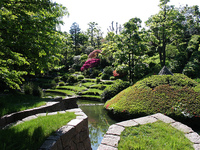 Jardin Albert Kahn
Jardin Albert Kahn
Jardin Albert Kahn »
A Japanese garden was made by the idealistic Banker, Albert Kahn, between 1895 and 1910. The style was freely interpreted and developed when the museum was established in the late twentieth century, resulting in a visually dramtaic post-modern confection.
Read more on Jardin Albert Kahn
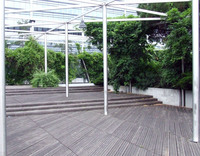 Jardin Atlantique Paris
Jardin Atlantique Paris
Jardin Atlantique Paris »
A roof garden above a major railway terminus. Since trains run from the Gare Monparnesse to the Atlantic coast, a maritime theme was adopted for the design. It has wave patterns, giant meterological instruments, dune planting, board walks, a symbolic cliff, boats and a sun-bathing deck. The illusion works best on hot days.
Read more on Jardin Atlantique Paris
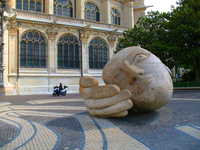 Jardin des Halles
Jardin des Halles
Jardin des Halles »
Made on the site of the old fruit and vegetable market, the garden has traditional trelliswork, on a large scale, and modern features. The semi-circular plaza with a giant oval head is notable. A major urban regeneration project was started in 2004, which includes a new garden called Jardin Nelson Mandela. The northwest part of the garden and an impressive adventure playground for children opened in 2013.
Read more on Jardin des Halles
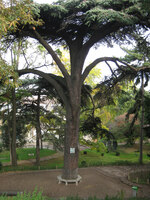 Jardin des Plantes
Jardin des Plantes
Jardin des Plantes »
This old enclosed botanic garden ('garden of simples') was established by Louis XIII in 1626 and opened to the public in 1640. There are parterres, a rotunda and an amphitheatre.
Read more on Jardin des Plantes
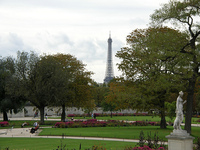 Jardin des Tuileries
Jardin des Tuileries
Jardin des Tuileries »
<p>A key project in the history of garden design and in development of Paris as an axial city - and thus of the <a href="https://www.gardenvisit.com/history_theory/garden_landscape_design_articles/historic_design_styles/high_baroque_garden_design_style">High Baroque Style of Garden Design</a>. The Tuileries garden was started by Catherine de Medici. Loving music, the arts, literature and science, she thought of herself as Italian, ordered her clothes from Mantua and loved the Medici's Florentine gardens. Pierre le Nôtre became chief gardener and his son, <a href="https://www.gardenvisit.com/biography/andre_le_notre">Andre le Nôtre</a>'s father, held the same position. The Ja.....
Read more on Jardin des Tuileries
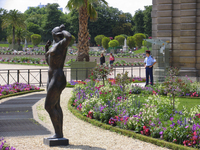 Jardin du Luxembourg
Jardin du Luxembourg
Jardin du Luxembourg »
<p>This was the first French garden to be influenced by the Italian Baroque. The gardens, and the palace, were begun in 1612. The Luxembourg has long been seen as a quintessential Parisian space and remains very popular. It was designed for anoter Medici princess, Marie de Medici (1573-1642) , who became Queen of France. Like the Boboli garden where Marie had spent her youth, the Luxembourg plan has two axes at right angles. Jacques Boyceau superintended the layout. Today, as in the seventeenth century, it is a good place to savour the cosmopolitan atmosphere of a rich palace garden. It has changed over the centuries but, judging from Evelyn's description (below), the character of the garden .....
Read more on Jardin du Luxembourg
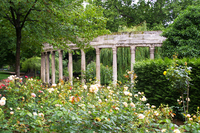 Parc de Monceau
Parc de Monceau
Parc de Monceau »
One of the first landscape parks to be made in Paris. It was designed for the Anglophile Duc de Chartres twenty years before the French revolution. After the revolution it became a public park in what is now a wealthy quarter of the city. The designer used Rousseau's words from La Nouvelle Héloïse in explaining the aim: 'to bring together all ages and all parts of the world in a single garden'. Many ages and parts of the world are represtented by follies: a Roman ruin, an Egyptian pyramid, a minaret, a Dutch windmill, a ruined fort and other structures inspired by China, the Middle Ages and prehistory. It was a romantic conception, made more romantic by Alphand in 1861. Parc Monce.....
Read more on Parc de Monceau
 Parc André-Citroën Paris
Parc André-Citroën Paris
Parc André-Citroën Paris »
The underlying geometry is modernist, embellished with post-modern ornament. It is a fine product of a late-twentieth century landscape design competition. Alain Provost and Gilles Clément explained their design as having four themes (artifice, architecture, movement and nature) with an overall transition from urban to rural. The use of water and clipped plants carry a distant echo of the French Baroque. A White Garden and a Black Garden are set into the urban fabric and lead on to the park's central feature - a vast rectangular lawn sliced through by a diagonal path. Two glasshouse pavilions, separated by a pavement of dancing fountains, stand at the urban end of the lawn. The River S.....
Read more on Parc André-Citroën Paris
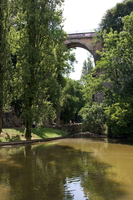 Parc des Buttes Chaumont
Parc des Buttes Chaumont
Parc des Buttes Chaumont »
<p>This may be judged Europe's most romantic public park, opened in 1864. Since it was made in a disused quarry, it is also a prime example of how industrial land can be recycled. Jean-Charles Adolphe Alphand's plan implies a calm mood, but Buttes Chaumont approaches the drama of a Delacroix painting. There are high cliffs, great trees, a 30 m waterfall and an iron bridge which springs from a cliff face to a pinacle crowned by a temple. In landscape design, as in many of the fine arts, romanticism began in the eighteenth century and reached its zenith in the nineteenth century.</p>
Read more on Parc des Buttes Chaumont
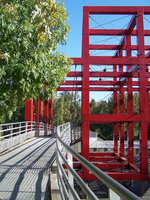 Parc de la Villette Paris
Parc de la Villette Paris
Parc de la Villette Paris »
<p>Parc de la Villette, in Paris, was the first major landscape design to draw upon deconstructionist philosophy. It was the result of a competition won by Bernard Tschumi. Tired of the old idea of a 'park', Tschumi wished to design 'the largest discontinuous building in the world'. Jacques Derrida, the philosopher, encouraged him to consider form before function. This anti-modernist approach 'deconstructed' the traditional procedure. Tschumi laid down three geometries: of points, lines and curves. Clashes were encouraged. The points took the form of a collection of steel pavillions, inspired by Russian Constructivist art and painted red. The primary lines are not unlike traditional French av.....
Read more on Parc de la Villette Paris
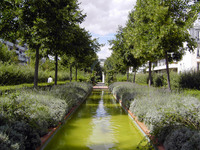 Promenade Plantee
Promenade Plantee
Promenade Plantee »
A nineteenth century railway viaduct was transformed into an elevated greenway through the 12th Arrondissement. The arcades beneath became arts and crafts workshops. The design was by Jacques Vergely (landscape architect) and Philippe Mathieux (architect). Pedestrians have a garden environment for their high-level walk and cyclists have a route at ground level. Then, 4.5 kms from the start, the routes come together at ground level and proceed to the Bois de Vincennes. The high-level route has some enclosed sections, as when it passes between modern buildings, and some open sections with exhileratingly expansive views.
Read more on Promenade Plantee
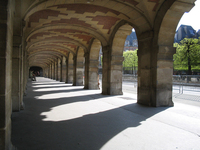 Place des Vosges
Place des Vosges
Place des Vosges »
The Place des Vosges is now the oldest residential square in Paris. It was made during the reign of Henri IV (1605-1612) and may have been designed by du Cerceau. The original name was the Place Royale. It is widely admired for the perfection and symmetry of its design. Working inwards, the square has: an arcade beneath the houses; an elegant street; iron railings; shady seating under clipped trees; green lawns with excellent fountains; crossing paths with open sunny seats; a central plantation of trees with a statue. Why have we lost the ability to create such brilliant urban open space?
Read more on Place des Vosges